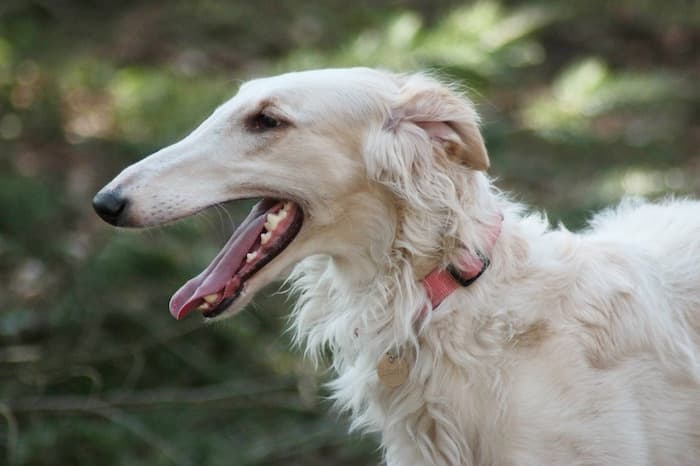Dogs are wonderful companions, but they can’t speak human language. Therefore, it is essential to learn how to read their body language and understand their behavior. Doing so, you can better communicate with your furry friend and build a stronger bond. This blog post will provide additional tips to help you read your dog’s body language and understand its behavior.
Licking
Dogs lick as a form of communication, as well as to show affection. A dog may lick their owner’s face to show love or excitement, while excessive licking can indicate anxiety or discomfort. Some dogs lick the air, which usually means they are trying to communicate something, such as being hungry or wanting attention. In this case, explore the internet, where you may find a website explaining this behavior more. Make sure to visit the site to gather more information. From there, you can better understand your dog’s behavior and respond to their needs accordingly.
Remember, being patient and observant is essential when reading your dog’s body language and behavior. Always approach them with love, kindness, and respect, and take the time to understand their unique personality and preferences. If you are unsure about your dog’s behavior or have concerns about its well-being, don’t hesitate to consult a veterinarian or a professional dog trainer for guidance and advice. With the proper knowledge and approach, you can create a happy, healthy, and loving relationship with your furry best friend.
Smelling
Your furry friend relies heavily on their sense of smell to understand their environment and communicate with other dogs. They may sniff other dogs, people, or objects to gather information. Pay attention to when and where your dog sniffs – it can give clues about their interests and emotions. For instance, if your dog sniffs around a lot while on a walk, it may be trying to gather information about its surroundings and feel more comfortable in its environment. On the other hand, if your dog avoids sniffing or seems disinterested, it could indicate anxiety or stress.
Panting
Dogs pant to regulate their body temperature and cool down. However, excessive panting can also indicate anxiety or stress. If your dog is panting heavily and there is no apparent reason for it (such as exercise or hot weather), it may be experiencing discomfort or anxiety. In this case, it’s vital to assess the situation and identify the source of their stress. Perhaps they are in an unfamiliar environment or have encountered a new person or animal. You can try to comfort your dog by speaking calmly and soothingly and providing a safe space for them to retreat to if necessary.
Body Movement
Pay attention to how your dog moves their body. A relaxed, loose body typically indicates a calm and friendly demeanor, while a stiff or tense body can indicate aggression or fear. Dogs may also use body movement to communicate, such as jumping to greet you or bowing down to initiate play.
Another critical aspect of reading your dog’s body language is recognizing signs of stress or discomfort. Dogs may display signs of stress through body posture, vocalization, or changes in behavior. Some common anxiety symptoms include trembling, avoiding eye contact, or cowering. If you notice these signs, it’s essential to take a step back and assess the situation to determine the cause of the stress. Removing your dog from the case or providing a calm and safe environment to reduce their stress levels may be necessary.
Body posture
How a dog holds its body can also give clues about their emotional state. A relaxed, loose posture typically indicates a calm and friendly demeanor, while a tense or stiff posture can indicate aggression or fear. Pay attention to whether their weight is evenly distributed or shifted to one side. If your dog’s body is tense or stiff, its tail is tucked between its legs, or its ears are pinned back, it’s essential to approach them calmly and avoid sudden movements or loud noises that may escalate their fear or aggression. Instead, create a calm environment and give your dog space to calm down. If the behavior persists or becomes a recurring issue, it may be necessary to seek the advice of a professional dog trainer or behaviorist to help address the underlying problem.
Vocalization
In addition to body language and posture, paying attention to your dog’s vocalizations can provide insight into their emotions. Dogs use barks, growls, and whines to communicate. A high-pitched bark can indicate excitement, while a low growl can indicate aggression. Whining can indicate anxiety or discomfort. Pay attention to the tone and pitch of their vocalizations and their body language when making these sounds.
The tail
The tail is one of the most expressive parts of a dog’s body. A wagging tail typically indicates happiness, but the position and speed of the wag can also give clues about their emotional state. A high, stiff wagging tail can indicate alertness or aggression, while a low, relaxed wag can indicate calmness or submission. Often, a tucked tail indicates fear or compliance, while a straight and rigid tail indicates aggression or dominance. It’s essential to pay attention to the overall body language of your dog, as tail position alone may not always accurately indicate their emotional state.
Eyes and ears
A dog’s eyes can also reveal a lot about its emotional state. Dilated pupils may indicate excitement or fear, while narrowed pupils can indicate aggression. A relaxed, soft gaze can indicate contentment, while a fixed stare can indicate aggression. Similarly, dogs use their ears to communicate their emotions. Raised ears may indicate alertness or interest, while flattened ears can indicate fear or submission. Pay attention to the position of the ears and whether they are facing forward, to the side, or back. When you see these signs, it is vital to approach your dog calmly and try to understand what they are feeling or trying to communicate.
In conclusion, being aware of your dog’s overall behavior is essential. Changes in eating habits, energy levels, and vocalization patterns can be signs of an underlying health issue or emotional distress. Regular vet visits can help ensure your dog is healthy and happy. Finally, it is essential to remember that every dog is unique and may express their emotions differently. The key is to observe your dog and understand their behavior patterns. With time and practice, you can better understand your furry friend’s needs and build a stronger bond.
Related Reading



